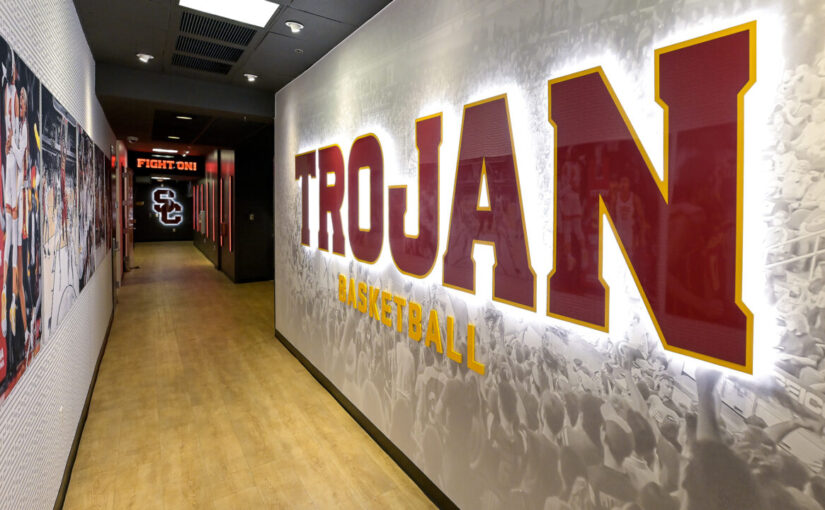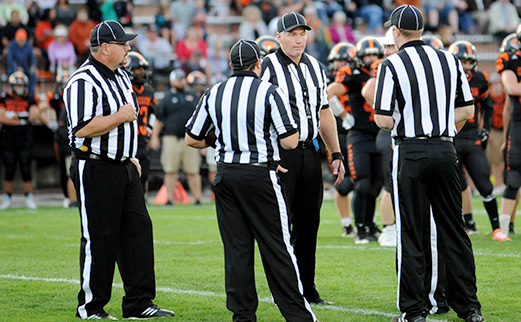Safety Precautions to Protect Student-Athletes
By Thomas L. Gowen, Locks Law Firm, Philadelphia, Pa.
The NFL concussion litigation has raised awareness of the fact that concussions are serious injuries to the brain. Not restricted to professionals, they are occurring with great frequency in youth sports at the club, high school and college levels.
More than 95 percent of the young players engaged in youth sports will never play professionally, but they will be dependent upon a fully functioning brain in order to attend college, learn a trade and generally become productive adults. Unfortunately, the occurrence of concussive re-injury to the brain may deprive some of these young student-athletes of their full potential, particularly if concussions are not managed conservatively.Although football generates more per player concussions, these brain injuries also occur in substantial numbers in other sports, especially youth soccer, hockey, basketball and cheerleading. In “The Concussion Crisis,” published in 2011, Linda Carroll and David Rosner document the extensive incidence of concussions in both youth and professional level sports. Carroll and Rosner report that in one study almost half of the million boys playing youth football had suffered at least one concussion, with many of them experiencing multiple concussions.
But with more young people playing soccer and basketball than football, the number of concussions in those sports nearly approached the total numbers in football. Particularly surprising was the finding that high school girls were sustaining more than three times as many concussions as boys in basketball and more than 50 percent more in soccer, according to the book.
There is now consensus among knowledgeable medical and legal professionals that a concussion occurs when there is a change in mental status such as confusion, headache or dizziness that occurs after a blow to the head, a jolt or a significant whipping motion of the head. A player who had their “bell rung” feels unsteady on his or her feet, is “in a fog” or begins to suffer a headache, likely has suffered a concussion.
While many people recover from mild concussions in a matter of days or weeks, many do not, and it is difficult, if not impossible, to predict how long recovery will take. For that reason, putting a player back in a game before healing from a concussion is a high-risk proposition. Unfortunately, the desire to win, and the need to impress a coach or help the team, has too often caused good judgment to be cast aside.
For many physical injuries, the diagnosis on the sideline is obvious. But the tendency to tell a player to shake it off and get back out there when the player has sustained a concussion has been well documented, particularly in contact sports. The macho ethic of sports like football and hockey; the lack of knowledge of the signs, symptoms and potential consequences of concussions; and the unavailability of onsite medical personnel all contribute to this problem.
Free resources are available to educate those involved. These include the Centers for Disease Control and Prevention’s clipboard checklists of concussion symptoms and actions that should be carried by every coach.
Understating the Brain
To understand why helmets often do not protect athletes from this injury, it’s important to understand the physiology of the head. The brain is a gelatinous substance that sits within the hard, bony structure of the skull. When brought to a sudden stop the brain continues to move, crashing and rebounding into the surface of the skull. This can create bruising, shearing or lacerating among millions of the brain’s axons and neurons. Blood vessels within or along the covering of the brain may be torn, causing blood to collect outside the blood vessels and creating a hematoma. Swelling and hematomas can become surgical emergencies because of the serious pressure they place on the brain.
A player with any loss of consciousness, severe headache or significant confusion must quickly be removed from competition and be medically evaluated. A CT scan, which can be performed at any hospital, is exquisitely sensitive for blood in the brain and is the gold standard for diagnosis of a subdural or intracerebral hematoma. Prompt diagnosis of this type of injury can be the difference between life and death.
The more difficult call for sideline personnel is the less symptomatic concussion. In these cases, the player may be experiencing a low-grade headache, confusion, amnesia, double vision, light-headedness, dizziness, confusion, or sensitivity to light or noise. These generally indicate that the player has suffered a concussion and he should not be allowed to return to the game.
Unfortunately, gross neurological tests are not very effective in ruling out the presence of a concussion. A trainer holding up two fingers in front of a player, or asking him or her their name and location are not sufficient to rule out a concussion, although a wrong answer could certainly be indicative that one has taken place.
Better diagnostic tools need to be developed and those already in existence should be utilized. The University of Pittsburgh Brain Injury Program created IMPACT testing, which measures a player’s baseline level of functioning at the beginning of a season, before any injury has occurred, and can then be re-administered after a potential concussion has taken place. This program can be inexpensively purchased by school districts and leagues, and if properly used, can be significantly more sensitive than the gross neurological measures previously available. These types of programs should always be used in contact sports.
If properly managed, most players will recover from mild concussions. But repeated concussions could have increasingly greater effects, especially when a second one occurs before the first one has properly healed. This is because it will likely require much less force due to the existing brain injury.
Prevention and Recovery
In the short run, much of the focus regarding concussions must be on prevention and the conservative management of players who experience concussions symptoms. Players should not be returned to play until they are cleared by a knowledgeable medical professional, and those professionals must resist the temptation to clear a player too quickly. In fact, adequate recovery may require weeks of rest.
Since helmets are unable to prevent the movement of the brain inside the skull when it is brought to an abrupt stop, officials should consider the need for major rule changes to reduce the likelihood of brain injury. While this very suggestion causes immediate negative reaction, a serious evaluation is necessary given the hazard to the most critical organ in the body. While collisions will always be present in games that involve one group of players trying to get by or block others, some tactics should be questioned. For example:
- Could leading with the head while blocking or tackling in football be banned?
- Should the crouched stance of the linemen be eliminated because it fosters contact with the head?
- Could the header in soccer be eliminated, perhaps replaced with clasped hands above the head to redirect the ball?
- Should penalties for plays violating the safety rules of the game be more strictly enforced?
- Should education of players and coaches about the necessity for protecting the head become mandatory parts of training for the games?
Team sports can and do provide excellent training, life lessons, physical fitness and other benefits for young players. But as the nature of injury to the brain becomes better understood, it is clear that protecting the brains of young players is paramount.
Thomas L. Gowen is a graduate of Haverford College and Villanova University School of Law. He advocates for greater safety in youth sports particularly with regard to brain injury and has handled many brain injury cases. He can be reached at [email protected].





